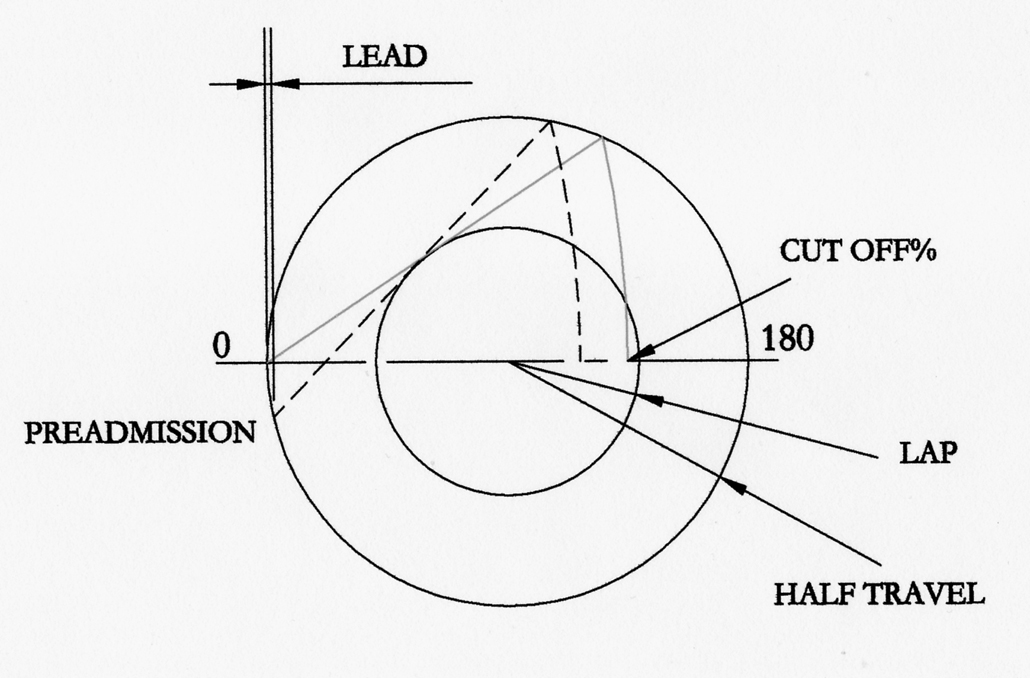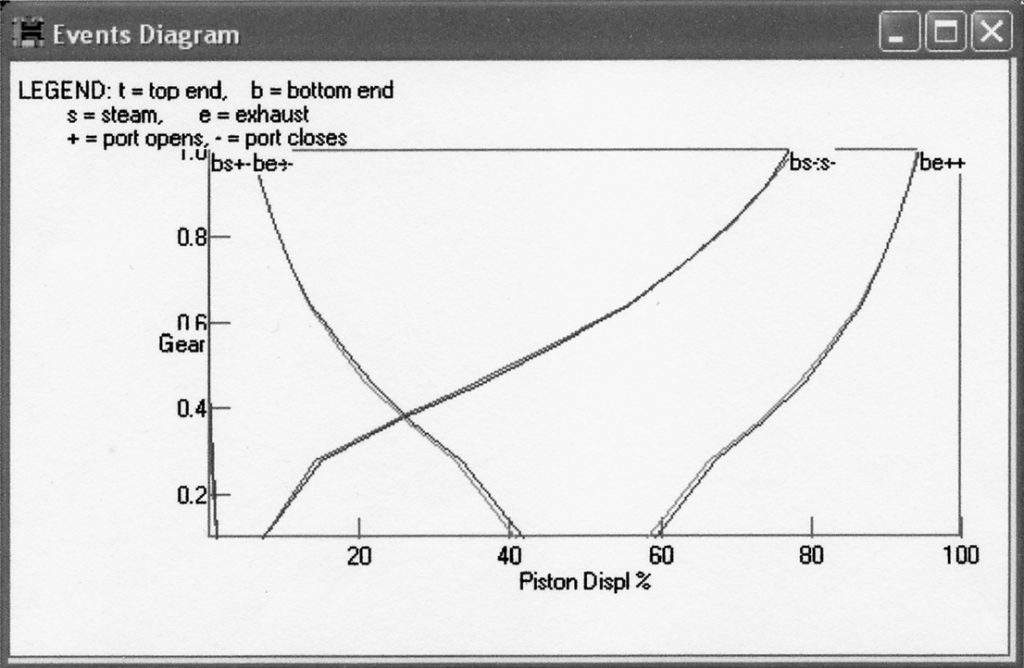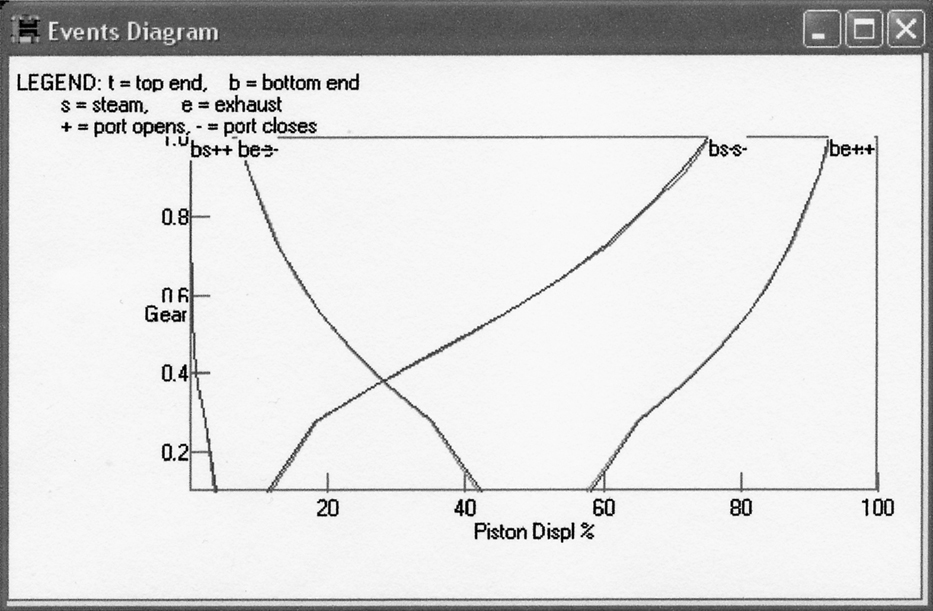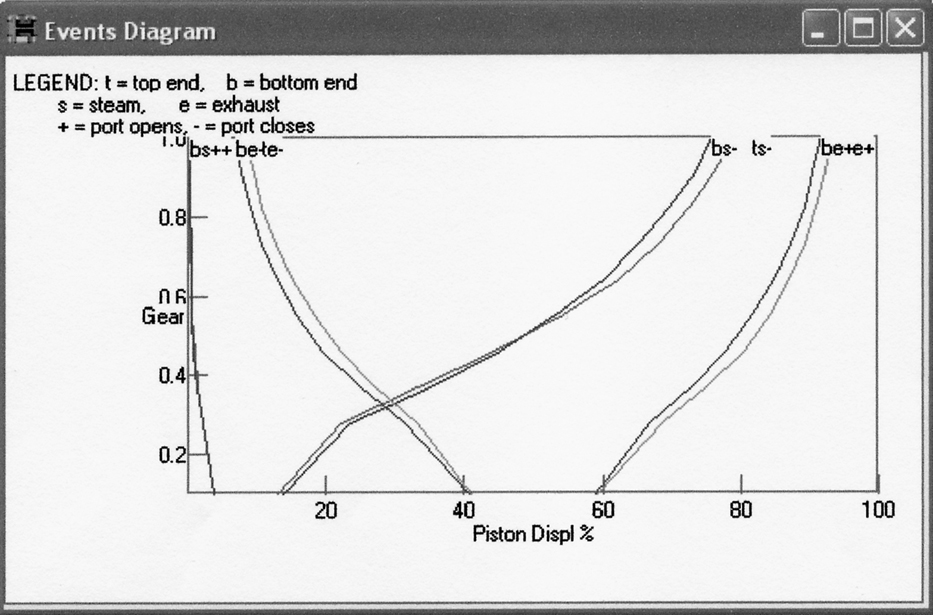
LEAD is a term with which most steam engineers are familiar but largely as a dimension within the valve and ports, not as a dynamic effect upon the valve events in the steam distribution cycle. It is cited as the amount by which the port is open to live steam when the piston is at dead centres and can be physically dimensioned and measured when the crank is at 0° and 180°. Since it is such a small fraction of other dimensions within the cylinder and valve gear area it follows that care and accuracy will be required in order to obtain the correct figure in practice. It cannot be ‘machined’ in the manner that lap is achieved, for instance.
Expanding the term, lead constitutes an amount of steam admitted before dead centre in order to cushion the mass of piston and associated parts. In most applications this will be required equally at each end of the stroke but large vertical engines obviously create a condition whereby more cushioning is necessary at the bottom end of the cylinder(s) than at the end of the upstroke (normally achieved in conjunction with unequal laps). Moreover, on starting or at slow speed lead has virtually no function.
As piston speeds rise cushioning may become desirable according to the compression characteristics and an earlier start to the process of getting steam into the cylinder may be advantageous. Having now introduced the time factor it makes sense to consider how long the port remains open before dead centre, rather than by how much: lead as a dimension during the design of the valve gear and ports becomes a quantity of preadmission, an advance of the whole timing. It is the acceptance of the behaviour of preadmission that determines a suitable lead dimension, not the other way round.
Since the masses that require cushioning are virtually absent in models (even large ones) and the piston speeds are ridiculously slow by comparison to full size, is lead desirable at all? The quick answer depends on what the engine is expected to do, but the technical answer is that one cannot intrinsically ignore lead. Its effects are present because notching up the gear alters the preadmission as a function of timing. Even the constancy of lead attributed to Walschaerts’ gear is not scientifically absolute. Preadmission always increases with shortened cut off.
Stephenson’s gear exhibits an increase in lead as mid gear is approached (except in the case of cross rods), whilst most radial valve gears are said to have constant lead. Many GWR engines had a negative lead setting in full gear so that towards mid gear the resultant increase to positive lead would not be excessive. This perhaps gives the wrong impression. Lead determines the preadmission characteristics affecting compression towards the end of the stroke; in other words lead gives rise to a timing device, and one which advances all valve events as cut off shortens, irrespective of the valve gear employed.
The diagram axis represents the piston stroke superimposed upon valve travel at a different scale. It shows the provision of lead in context for full gear and how even this small amount advances events. When the travel is well shortened the amount of lead may stay the same, depending on the gear employed, but the admission occurs earlier and the compression and all other events are advanced with it. As cut off is shortened lead becomes an increasing percentage of the total valve travel and preadmission constitutes a greater percentage of the constant piston stroke. Swindon therefore set negative lead in full gear to avoid excessive preadmission and compression towards shorter running cut offs, not to avoid excessive lead as such.
The difference between a gear of constant lead and one of variable lead now becomes more or less immaterial, since both can be arranged to produce acceptable preadmission characteristics in practice. Here, the judgements may differ in full size in order to avoid wire-drawing, which afflicted the Britannia on the Rugby Test Plant at 20% cut off, or to curtail compression loops apparent during King testing at similar settings. [Both are examples of Walschaerts’ constant lead valve gear]. Neglecting strict economics, compression loops can be ameliorated by greater clearance volumes and more particularly by the removal of blast pipe restrictions. At an average running cut off of 20%-25% compression should not exceed 30%, with an admission of between 1% and 1.5% of the stroke. With a line-in-line exhaust this would place release at around 68% - 70%.
To see this in action by example observe the excellent GWR Stephenson’s gear of the Hall Class. The total variation of lead from full gear to mid gear is fixed by the gear’s proportions – notably the length of the eccentric rods, but the advancing of the mechanism is achieved through the angular setting of the eccentrics. Bear in mind that this is still notionally at the design stage, attempting to find the parameters that will achieve the sort of compression/admission figures quoted above. At 21.5% cut off an eccentric advance of 26.5° produces 28.5% compression and 0.3% admission; 23.5° advance invokes 32.5% compression and 1.75% admission. The same cut off with a 25° advance gives 30% compression with an admission of 1.2%. The equality of all events is immaculate but the results at 25° advance fit the best end of the stipulations. The exhaust port still opens fully at this cut off. The lower left hand lines in the screenshots depict the preadmission increasing towards mid gear as a percentage of stroke.




Walschaerts’ gear would reveal a comparable propensity in spite of the ‘constant’ lead. Where we wish to employ less than the scale lead, in order to achieve design parameters more appropriate to a model, it can be quite difficult to assuage even this small quantity and at the same time preserve the external gear’s correct appearance. This sort of problem often features in designing parts of a scale working model, of course, the boiler being the prime example. However, it does come as something of a shock to discover that such a minute dimension as lead has a more far reaching effect than its measurement might at first suggest. At slow speed, because of the adhesion problem, the wheels will spin unless the steam is throttled at the regulator on a model. Only at greater speed does the steam chest pressure approach that of the boiler. The ease with which steam can then enter the model cylinder indicates that scale lead is excessive and may be counter-productive: at short cut offs there could be as much steam opposing the piston just before dead centre as there is to push the piston after dead centre!
When locomotives are pressed to speeds exceeding 85 mph the lead provision becomes critical to power development and those frequently operating at such speeds may require lead provision quite different from slower freight engines. A program like Bill Hall’s PERFORM can be used to predict the best lead amount in express cases. (see DOWNLOADS)
< Miniatures ---------------------------------------Contents------------------------------------- Simulation >